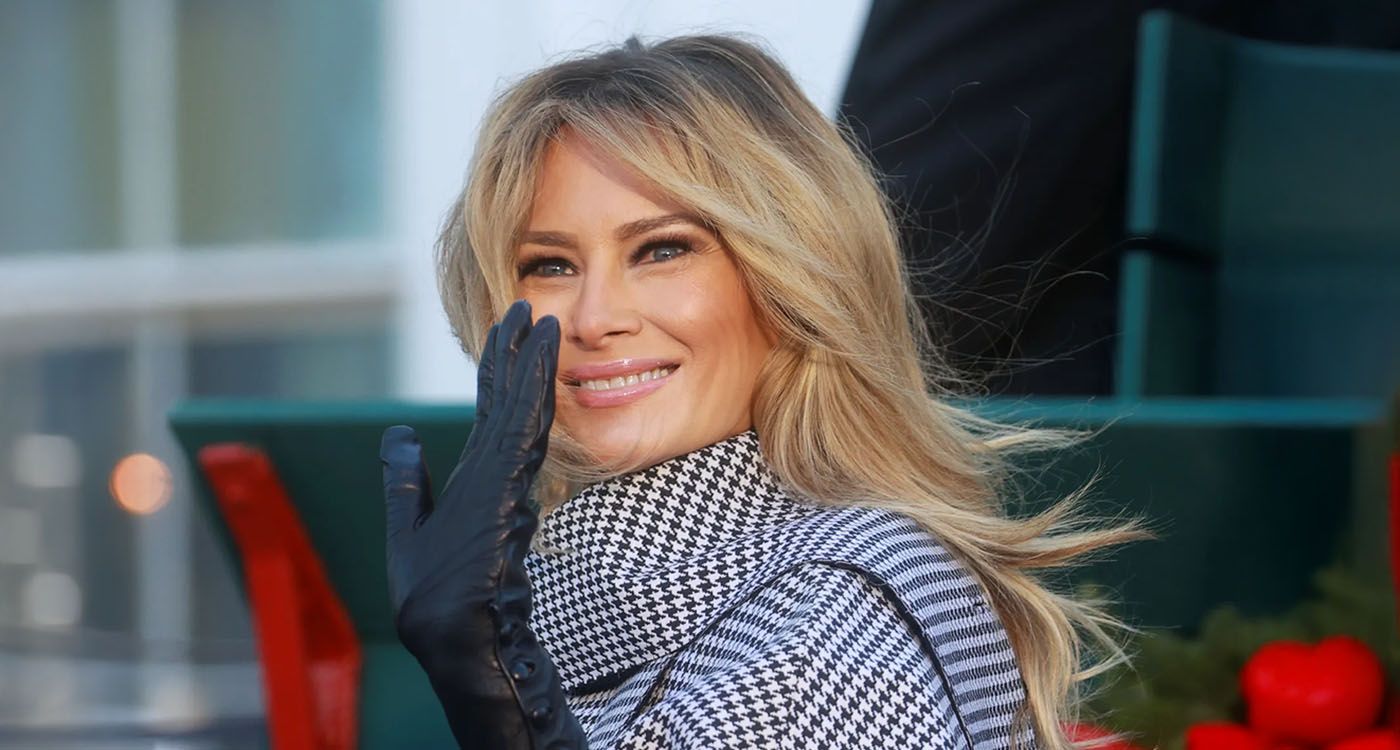- Home
- Middle East
- When Fashion Meets Politics: The Silent Language of Power

©Al-Markazia
In a world where optics often speak louder than words, the intertwining of fashion and politics has become a language of its own. Few people encapsulate this better than Melania Trump.
On January 20, 2025, during her husband’s second inauguration, First Lady Melania Trump made a significant fashion statement that blended elegance with subtle messaging. She wore a navy silk wool double-breasted coat designed by American designer Adam Lippes, paired with a matching pencil skirt and an ivory silk crepe blouse. Complementing her ensemble was a wide-brimmed boater-style hat by New York-based milliner Eric Javits, which partially obscured her face, adding an air of mystery and detachment.
This choice of attire was a departure from her 2017 inauguration outfit, in which she donned a Ralph Lauren powder blue ensemble. The outfit—a nod to Jacqueline Kennedy’s iconic style—wasn’t just a sartorial choice, it was a carefully calculated symbol of elegance, continuity and subtle power. In the hyper-visual realm of politics, such moments remind us that clothing often carries as much weight as the words spoken by those who wear it.
Throughout history, fashion has been a tool for making statements—silent yet resounding. Take Queen Elizabeth II, whose brightly colored outfits became her signature. This wasn’t a coincidence, the Queen wore vibrant hues to ensure she was always visible to her subjects in large crowds. Her sartorial choices were a testament to her role as a monarch who wanted to be seen and acknowledged, a symbol of stability in a rapidly changing world.
Another political staple, the “power tie,” has become synonymous with confidence and authority. A bright red tie, often favored by leaders and CEOs, exudes dominance and determination, while a blue tie signals calmness and trustworthiness. These subtle details influence perception, showing how fashion can shape narratives before a word is even spoken.
During Donald Trump’s presidency, Melania’s wardrobe was a masterclass in subliminal messaging. Critics and supporters alike scrutinized her choices, often finding layers of meaning. Her infamous “I Really Don’t Care, Do U?” jacket, worn during a visit to a migrant detention center, sparked widespread debate. Was it a tone-deaf oversight, or a calculated provocation? Whatever the intent, the jacket proved the potency of fashion in political discourse.
On other occasions, Melania’s wardrobe choices appeared to serve as diplomatic tools. During her 2018 trip to Africa, she wore outfits reminiscent of colonial-era explorers, which stirred controversy. Whether intentional or not, the fashion choices highlighted how clothing can evoke historical connotations and influence public perception.
The intersection of fashion and politics isn’t confined to modern times. Consider Marie Antoinette, whose extravagant gowns became symbols of the French monarchy’s detachment from its people. Her infamous “Let them eat cake” moment wasn’t uttered in words but reflected in her ostentatious wardrobe, which fueled revolutionary sentiment.
In the 1960s, Jackie Kennedy’s pillbox hats and chic outfits became symbols of a new era of American sophistication. Her wardrobe choices during state visits were carefully curated to convey respect and diplomacy, underscoring the power of fashion as a bridge between cultures.
More recently, Kamala Harris wore a suffragette white pantsuit during her vice-presidential acceptance speech in 2020. The outfit paid homage to the women’s rights movement, blending the past with the present to inspire future generations.
The link between fashion and politics lies in their shared ability to reflect societal values and aspirations. Fashion, like politics, operates as a mirror of its time. During the Great Depression, women’s hemlines dropped, reflecting a more conservative era. In the rebellious 1960s, mini skirts symbolized freedom and defiance.
Today, fashion designers often incorporate political statements into their work. For example, Maria Grazia Chiuri’s Dior collection featured feminist slogans like “We Should All Be Feminists,” while brands like Balenciaga have used their runways to comment on climate change and consumerism.
Fashion, at its core, is a silent communicator. It can signal allegiance, dissent or ambition without a single word being spoken. When Melania Trump chose to channel Jackie Kennedy at the inauguration, she wasn’t just wearing a dress, she was aligning herself with a legacy. When Queen Elizabeth donned neon green, she wasn’t just making a fashion statement, she was ensuring her presence was undeniable.
In the ever-evolving relationship between fashion and politics, clothing becomes a canvas for history, identity and power. Whether it’s a First Lady’s inauguration gown or a suffragette’s white dress, fashion doesn’t just follow the times, it shapes them. As history shows, what leaders wear is never just an outfit it’s a statement, a story and sometimes, a revolution.

Comments